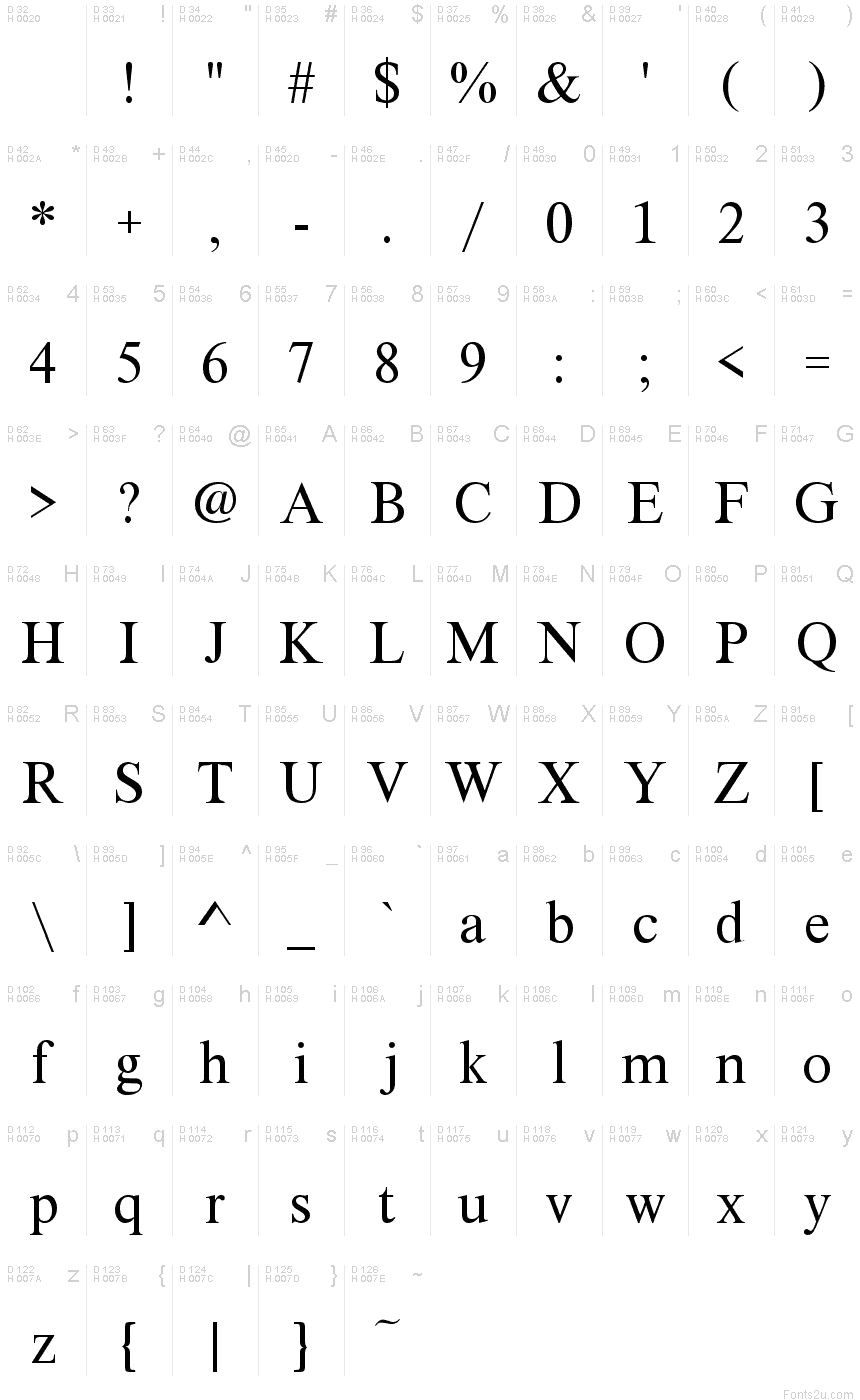XSerif Unicode
TrueTypeДля личного пользования
- Ударения (частичные)
- Ударения (полные)
xsuni.ttf
Теги
Таблица символов
Для просмотра различных таблиц символов, содержащихся в этом шрифте, пожалуйста, используйте раскрывающееся меню.

Основная информация о шрифте
О авторских правах
(c) Ch. Singer 1997. Use Font Property Extension to read License table.
Шрифтовая семья
XSerif Unicode
Шрифтовая подсемья
Regular
Уникальная подсемейная идентификация
DTP- XSerif Unicode Version 1
Полное имя шрифта
XSerif Unicode
Имя настольной версии
Version 1.00
Имя поскрипт шрифта
XSerifUnicode
О торговой марке
Created by Type-Designer 3.0
О производителе
Описание
In addition to the codepages mentioned in "Charset/Unicode" table, this font contains Old Russian characters (Yat', Fita, Izhitsa) and combining diacritical marks with it's right UNICODE numbers.
There are also further characters used by Trediakovskij in 18 century and some characters for transliteration in user defined UNICODE area.
You can use these characters only if you have a UNICODE-based text processor (e.g. MS Word 97).
XSerif Typeface
When I wanted to create some special fonts for students of slavistics (e. g. for transliteration an Old Russian) I looked for a font with a "Times®"-like typeface that I could use as a base for my new fonts. But I found that all quality fonts are copyrighted and the quality of free and public domain fonts on Internet didn't please me, so I decided to create a new font with a slightly changed "Times®"-like typeface that I called "XSerif". Most common letters as "A" or "H" probably look like they do in every similar typeface, except slightly different poportions, serifs and weight, but some letters as cyrillic "zh" or cyrillic "l" are originally designed because I didn't like their shape in other "Times®"-like typefaces.
There is only Regular typeface existing at this time.
If you are looking for a base font to create fonts containig special characters you can use XSerif fonts under the two conditions described in "License" table.
There are also further characters used by Trediakovskij in 18 century and some characters for transliteration in user defined UNICODE area.
You can use these characters only if you have a UNICODE-based text processor (e.g. MS Word 97).
XSerif Typeface
When I wanted to create some special fonts for students of slavistics (e. g. for transliteration an Old Russian) I looked for a font with a "Times®"-like typeface that I could use as a base for my new fonts. But I found that all quality fonts are copyrighted and the quality of free and public domain fonts on Internet didn't please me, so I decided to create a new font with a slightly changed "Times®"-like typeface that I called "XSerif". Most common letters as "A" or "H" probably look like they do in every similar typeface, except slightly different poportions, serifs and weight, but some letters as cyrillic "zh" or cyrillic "l" are originally designed because I didn't like their shape in other "Times®"-like typefaces.
There is only Regular typeface existing at this time.
If you are looking for a base font to create fonts containig special characters you can use XSerif fonts under the two conditions described in "License" table.
Дополнительная информация о шрифте
Поддерживаемые платформы
ПлатформаКодировка
MicrosoftТолько BMP юникод
MacintoshЛатинская
ЮникодЮникод 1.0 семантика
Детали шрифта
Создан1998-04-09
Просмотр1
Количество глифов463
Единиц на Em2048
Права внедренияBнедрение для стационарной установки
Класс семействаСвободные засечки
НасыщенностьПолу-светлый
ШиринаСредний (нормальный)
Тип шириныНормальный
Mac стильЖирные
НаправлениеГлифы направленные слева направо
УзорPегулярный
ПоложениеПрямое
Толщина линииНормальная
ВысотаНе моноширинный